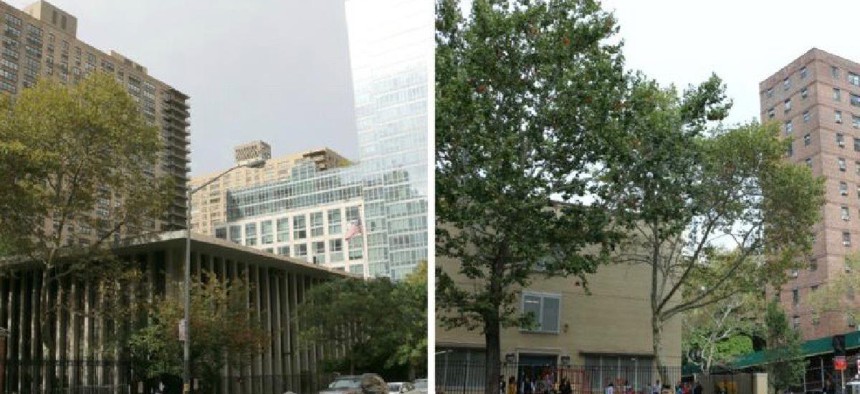The District 3 Community Education Council voted Tuesday night to approve a controversial school rezoning plan that officials hope will alleviate overcrowding and integrate schools.
Members of the volunteer board voted nine to one to adopt the new school boundaries, with many emphasizing the opportunity to address historic segregation on the Upper West Side.
“Today we are taking a step to right a wrong,” said council member Manuel Casanova. “This plan puts all schools on a path to be successful.”
In a statement, schools Chancellor Carmen Fariña praised the vote and “robust” community feedback.
“This is a critical step and we will continue working closely with schools to implement this plan and support families and educators during the transition,” she said.
While many parents and community members spoke in favor of the plan, others passionately argued it won’t do much to fix jam-packed schools or segregation.
Council members admitted the changes are a modest start toward greater school diversity. Though calls for large-scale integration plans failed to gain traction during the rezoning process, many council members on Tuesday committed to pursuing the issue longer-term.
“Our district is rich in diversity,” said council member Kimberly Watkins. “We have a lot to do.”
The plan is more than a year in the making. It follows a previous proposal that was tabled by city Department of Education officials after mounting opposition.
As approved, the plan shifts zone lines around high-performing P.S. 199, cutting some families from the Lincoln Towers community out of the boundary while including other new, luxury buildings. That has been one of the main points of contention, along with the move of P.S. 452 about 16 blocks south. P.S. 452 will take the place of P.S. 191, which is moving to a new building.
Parents at P.S. 452 were divided over the move. CEC members called for busing to be provided to ease the burden on families, and council chair Joe Fiordaliso said the city has committed to do so.
“I can’t think of anything that is more logical and reasonable,” he said.
Under the new plan, the zone for P.S. 191, which previously included much of the Amsterdam Houses public housing complex, will also be split among P.S. 199 and P.S. 452. CEC members and DOE officials hope the move will more evenly distribute the area’s poor and minority students among schools.
Many parents spoke up in support of that goal.
“I think sharing our school with lots of new families is a good thing,” said Hilda Blair, a parent at P.S. 452. “If we all do this together, I know we can be successful.”
It will take time to determine whether the plan works. P.S. 191 has underperformed on state tests compared with its neighbors, and parents unhappy with the zoning changes have threatened to transfer schools — creating concerns about potential overcrowding at P.S. 87.
“If this is an overcrowding nightmare, that’s on you,” Debby Saito, co-president of the P.S. 87 parent organization, told council members. “There will be less individual attention for students; There will be more exhaustion for teachers.”
Another sticking point: Residents in Lincoln Towers contend the city’s process and data used for the rezoning were both flawed, and have hired an attorney.
“Why is my child not worth you rolling up your sleeves to get the data right and get buy-in?” asked Elyse Reilly, a new parent whose son would be rezoned from P.S. 199 to P.S. 191.
CEC member Noah Gotbaum, who cast the lone vote against the rezoning, railed against the process undertaken to arrive at the final plan. The council has been accused of violating open meetings laws when it created its own rezoning proposal and submitted it in a letter to city officials.
“I’m glad we’re changing the zoning. That’s a good move,” Gotbaum said. “But the collateral damage was never discussed… The chaos this council is going to create is real.”
A separate vote on a plan to rezone schools in Harlem was put on hold Tuesday. The CEC had asked for changes in zone lines in the northern end of the district after city officials announced their intention to merge P.S. 241 STEM Institute of Manhattan. But parents there have had little time to weigh in on the proposal, which was announced two weeks ago.
Ultimately, Tuesday’s vote is likely not the end of this debate, which has raised larger questions about how desegregation can be achieved if parents fight to preserve the status quo.
“The change we need to make is really big,” said council member Dennis Morgan. “We need to change our understanding of what a good school is, and I don’t know how to do that yet.”
This article was first published on Chalkbeat New York on November 22.


